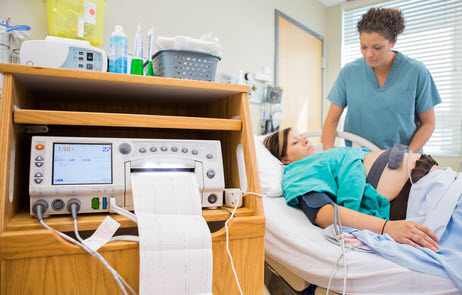In most cases, a C-Section is a straightforward and safe procedure. In 2000, a Mexican woman even performed one of these operations on herself. The story is rather intriguing, although it is definitely not for the squeamish. Both she and her baby survived. Things went very well in this particular C-Section.
But that’s not always the case. In fact, adverse outcomes are not at all uncommon. That’s especially true in large, busy hospital like the ones in Florida. In nearly all cases, medical malpractice is the culprit.
Malpractice during a C-Section is very easy for the hospital to hide. The mother is normally sedated and not fully aware of what’s going on, and the father is usually out of the room altogether. Sometimes, a doctor may admit that there were “some complications,” but s/he is rarely forthcoming about the extent of these problems. That does not become apparent until later, when some of the following symptoms or issues surface.
C-Section-Induced Infections in Florida
Once the doctor ruptures the membranes, the mother’s reproductive area is highly susceptible to dangerous infections. Bacteria which are normally harmless in one area of the body easily move to another area, causing problems like:
- Endometritis: This infection affects the lining of the uterus. It is normally not life-threatening, even if untreated. However, endometritis often causes significant reproductive problems.
- Post-Operative Infection: As in any other procedure which involves an incision, there is a risk of wound infection. These problems develop quickly and get worse quickly. Recovery time is also very, very long.
- Postpartum Sepsis: C-sections are the leading cause of this deadly infection. This condition is very difficult to treat and is sometimes life-threatening. Common signs include problems urinating and mastitis (breast infection).
These infections almost always cause significant pain and suffering. They basically take what should be a joyous event and transform it into a near-tragedy.
C-Sections, Florida Moms, and Maternal Bleeding
In all standard C-Sections, the patient loses about twice as much blood as other surgical patients. That is because a pregnant mother’s uterus has so much blood. This excess creates a high risk for complications like:
- Hemorrhage: Episiotomies, ruptured uterus, and vaginal tears are the leading causes of uncontrolled bleeding after a C-Section. The main problem is that the bleeding may start as a very slow leak and then burst once the patient gets home where she is far from immediate help.
- Placenta Accreta: This complicated condition is actually rather common. When the uterus is damaged, trophoblasts (cells that move nutrients from mother to baby) may grow uncontrollably and spread to other organs, such as the bladder. There are some risk factors. If the doctor does not properly account for them, the condition is very hard to detect.
When the medical staff clearly neglects an important duty, such as ignoring risk factors, Florida juries often award substantial punitive damages, in addition to the compensatory damages mentioned above.
Other common C-Section side effects include blood clots, emotional difficulties, and allergic reactions. These types of complications are especially common in “crash” C-Sections, because operations are so rushed.
Connect with Experienced Attorneys
C-Sections are increasingly common, and so are C-Section complications. For a free consultation with an experienced personal injury lawyer in Brandon, contact Reed & Reed. We have four area offices (St. Petersburg, Lakeland, Tampa, and Clearwater).
Resources:
telegraph.co.uk/news/worldnews/centralamericaandthecaribbean/mexico/1460240/I-put-the-knife-in-and-pulled-it-up.-Once-wasnt-enough.-I-did-it-again.-Then-I-cut-open-my-womb.html

